The Chrysler 4-wheel disc brake was built by Auto Specialties Manufacturing Company of St Joseph, Michigan and was tested first on a Plymouth. It used two expanding discs that rubbed against the inner area of a cast iron brake drum which doubled as the brake housing. The discs would spread apart to cause friction against the inner drum surface in the process of standard wheel cylinders. Chrysler discs had self- energy in that some of the braking energy would contribute to the braking effort made possible by small balls set in oval holes resulting to the brake surface. Due to the expense, the brakes were only available on Chrysler Imperial Crown along 1954 and the Town and Country Newport in 1950.
The 1950 Imperial was mostly a New Yorker which had a custom interior. It had a Cadillac-style grille with circular signal lights and its side trim was similar to the last year’s model, although the front fender strip reached the front doors and the rear fender molding was at the tire top level and included the stone guard. Different from the standard Imperial , the Imperial Crown had a side highlight where the rear fender moldings and stone guard were separate. The limousine version featured a unique leather interior and a leather top that blacked out the rear quarter-windows. The Imperial Crown had standard power windows. The 1951Imperial had lesser chrome than the lower-priced New Yorker of similar size. It had three horizontal grille bars with parking lights in between the bars and a chrome vertical center piece. The fender strips had a heavy horizontal molding strip running across it and bright metal stone shields and front fender nameplate.
